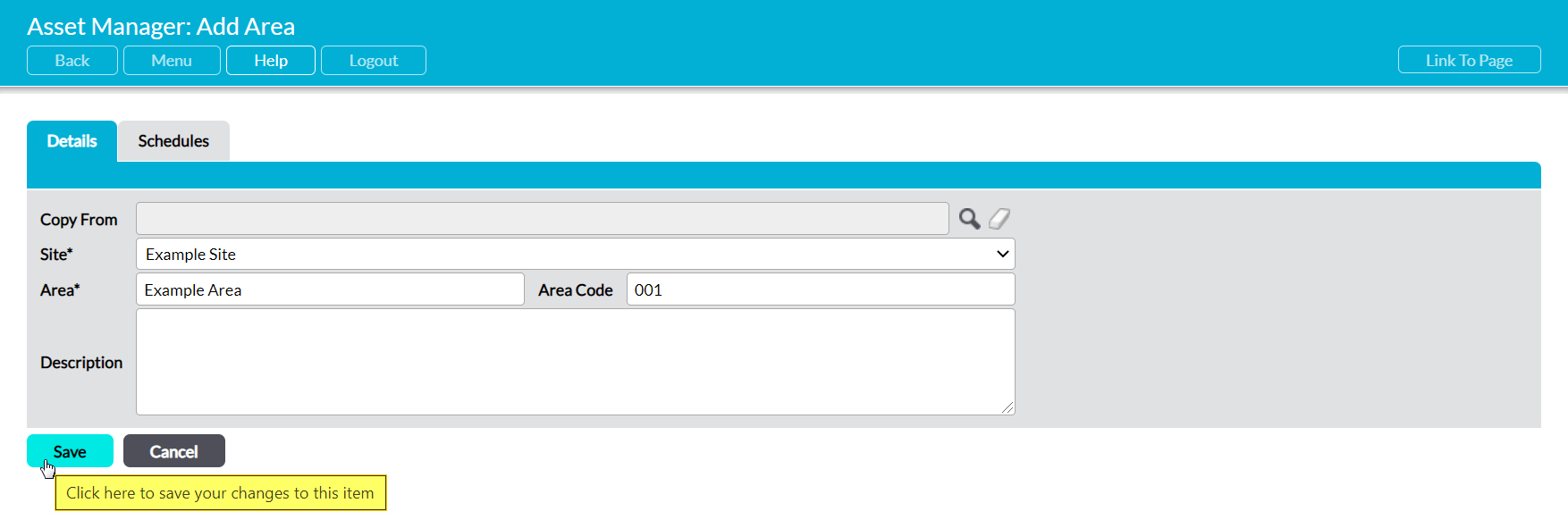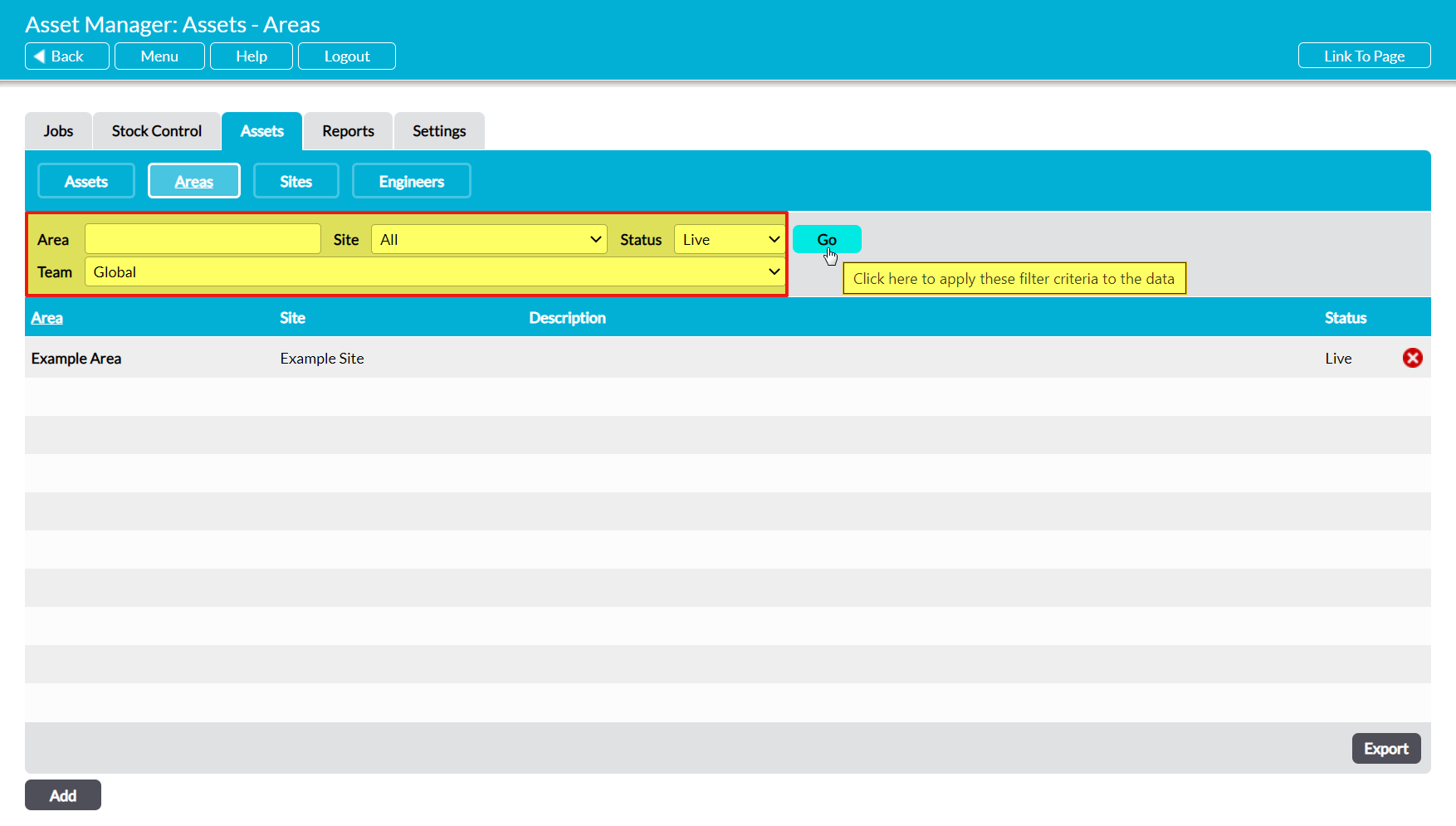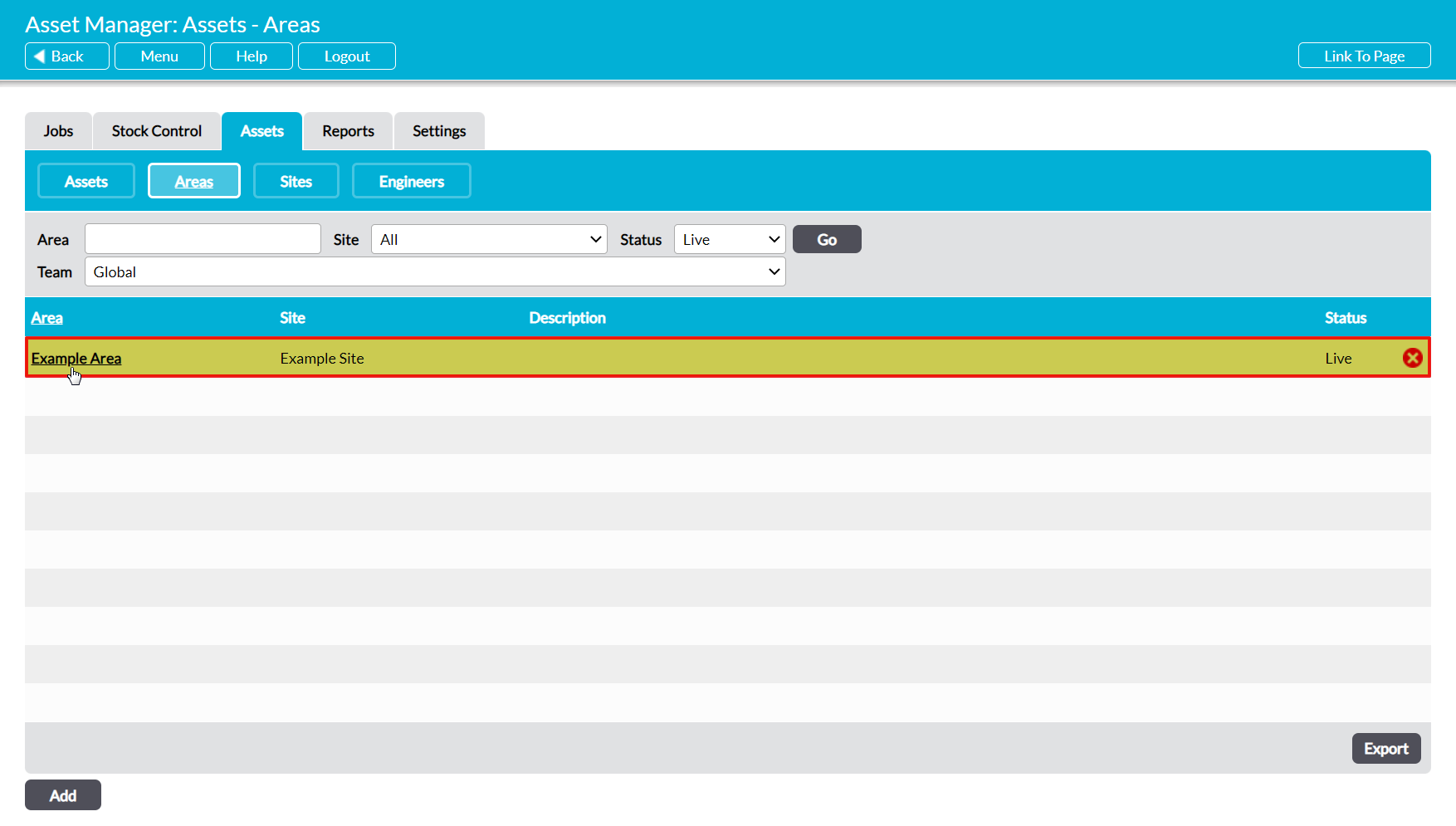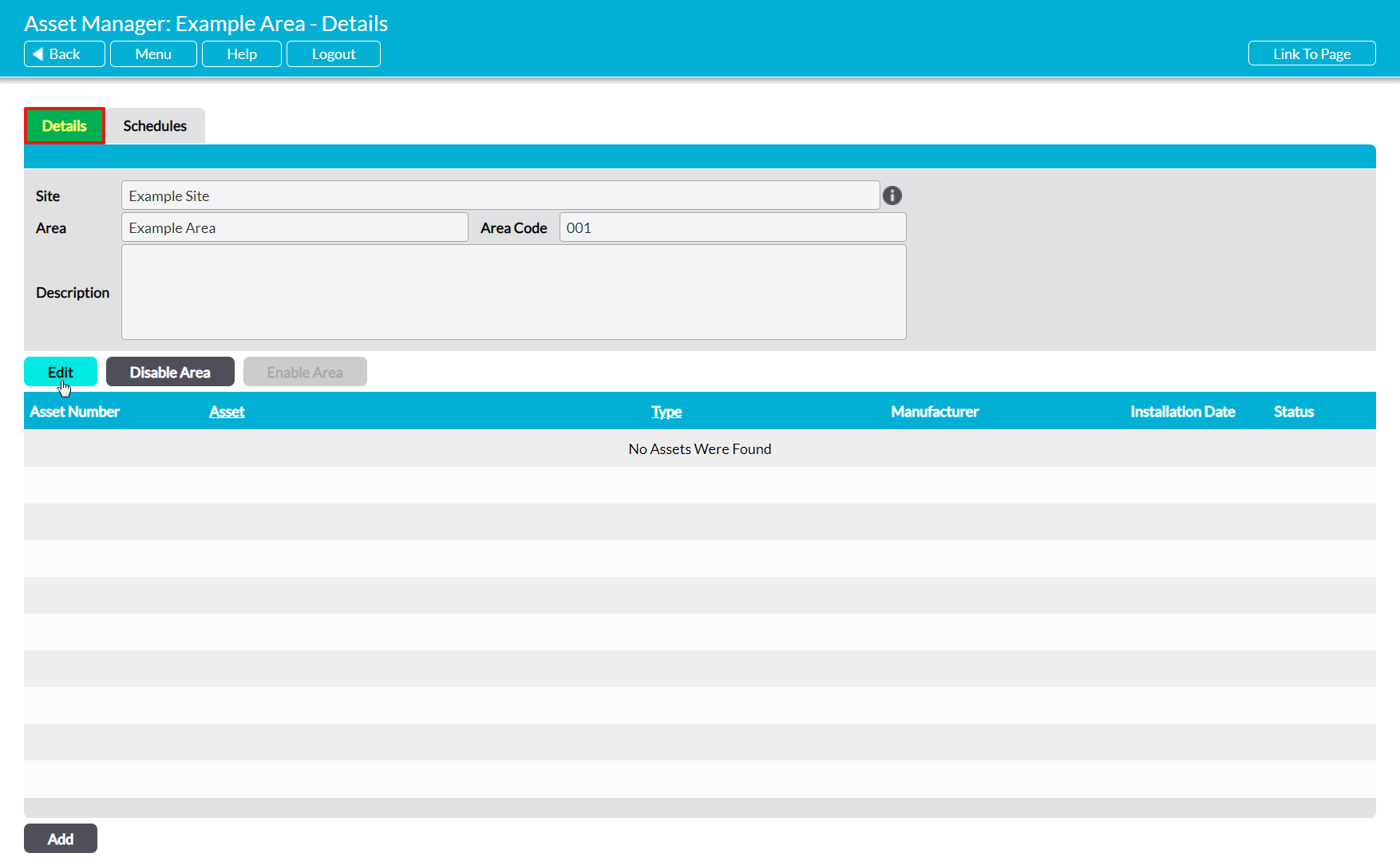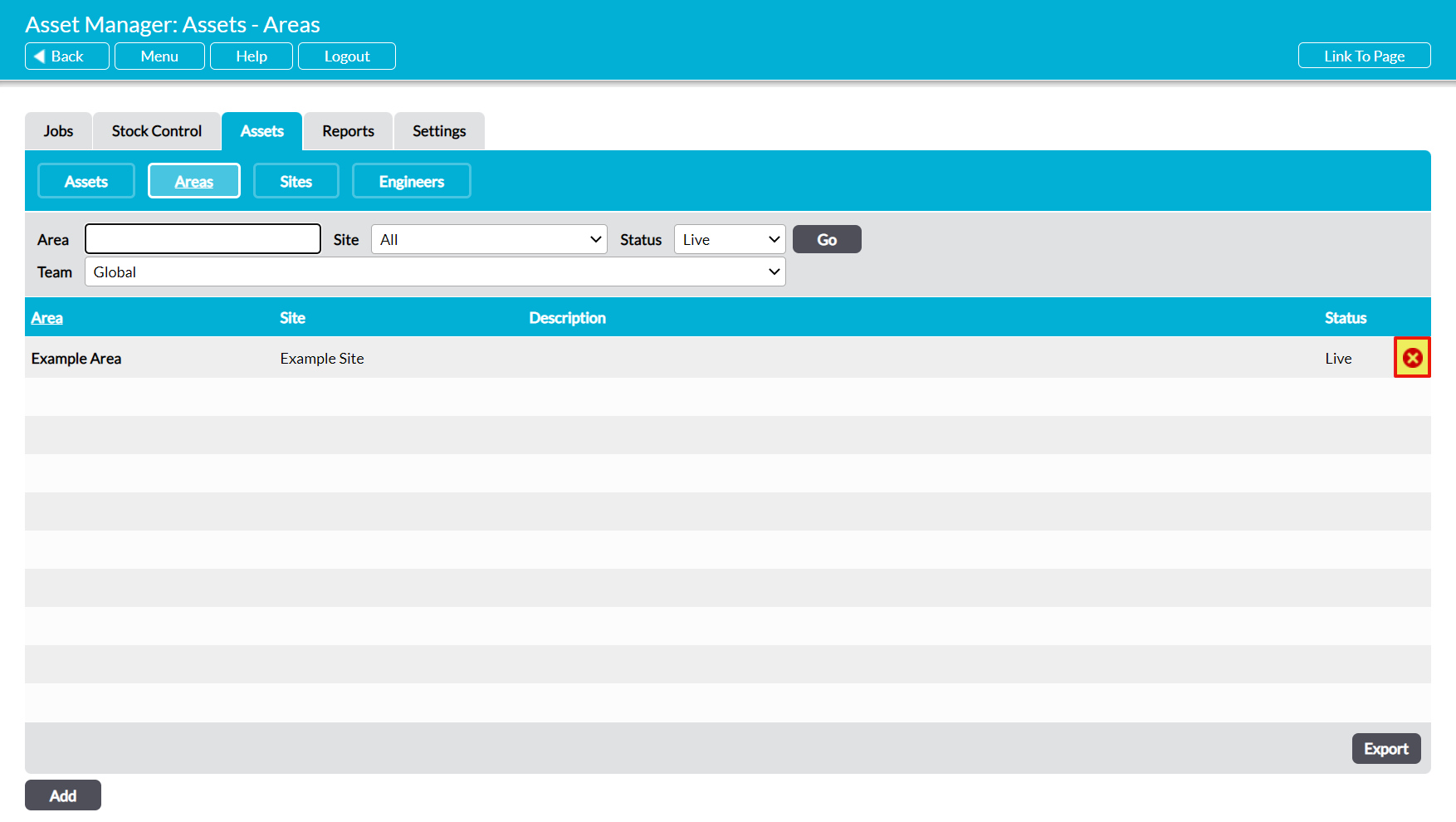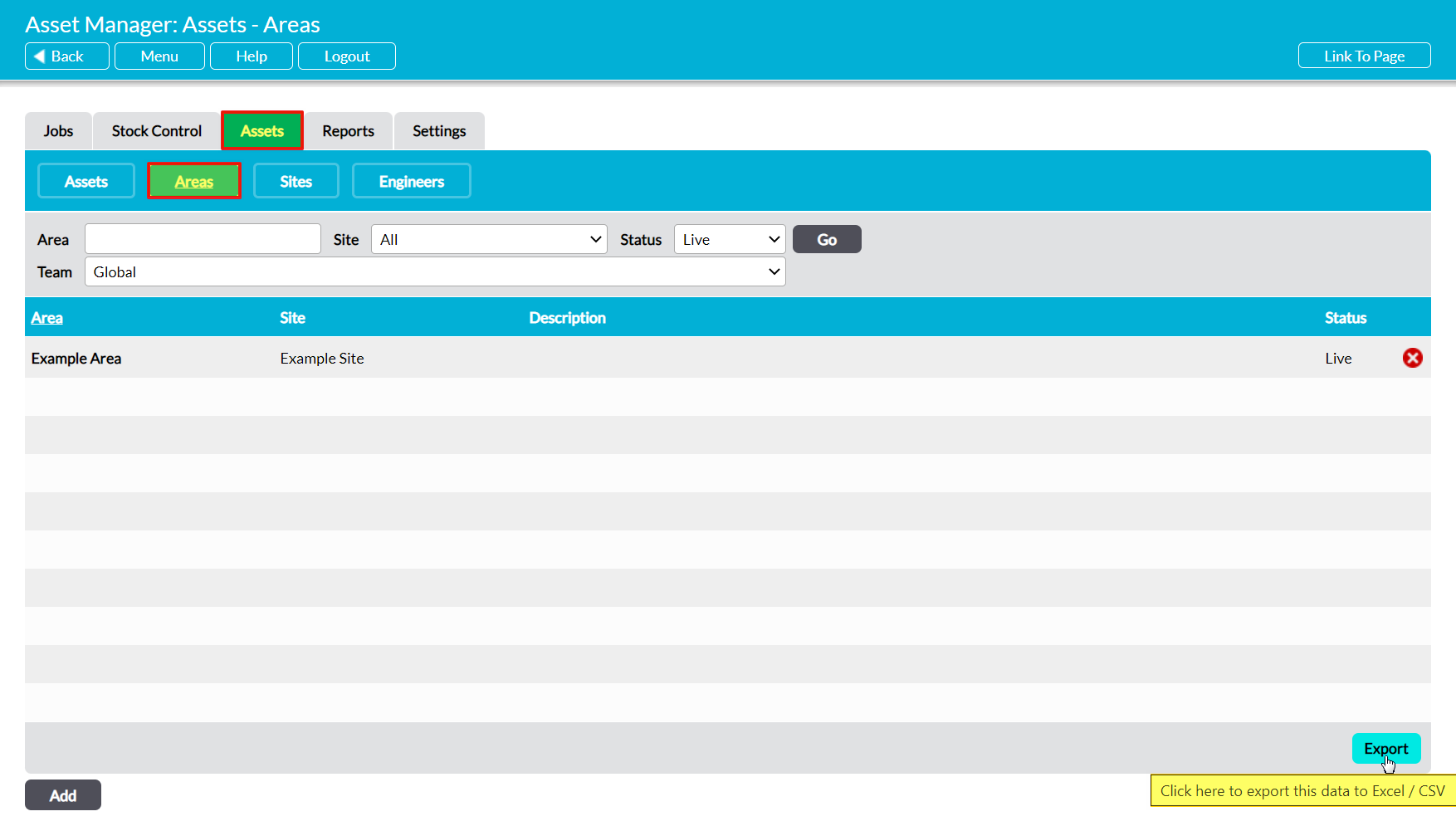Areas are specific parts of a given Site (e.g. Offices) at which an Asset might be kept, and are a required field when adding new Assets to your Asset Manager. They must be assigned to an existing site, and cannot be created unless at least one site has been configured within your Asset Manager module (see Manage the Asset Manager’s Sites).
There are six options available when managing your Asset Manager’s Areas. These are:
*****
Create an Area
To add a new Asset Area, open the Asset Manager on its Assets tab, and then click on the Areas button. This will open a register of all Areas that have previously been added to your system. Click on Add.
A blank Details form will open for you to populate. Five fields are available for you to complete:
Copy From – the option to copy the Name, Description, and Assets from an existing Area when creating a new Area.
Site* – click in this field to select the site with which an Area is associated. Note that the Asset Manager module does not draw from the common list of sites your organisation may have configured within other modules, so sites must be configured within this module separately (see Manage the Asset Manager’s Sites).
Area* – enter a name for the Area.
Area Code – the option to enter an identifying code against an Area. This must be unique and entered manually, but can comprise any combination of letters and numbers.
Description – the option to enter a more detailed description of an Area.
Note that Area Code must be entered manually, and can use any combination of numbers and letters, as your organisation requires.
Enter the necessary details, and then click Save.
You will be returned to the Areas register, where you can continue adding your organisation’s Areas. If there are no other Areas in your register, the new Area will be displayed at the top of the register. Otherwise, Areas are listed alphabetically by their Name.
*****
View an Area
To view an Area, open the Asset Manager on its Assets tab, and then click on the Areas button. This will open a register of all Areas that have previously been added to your system. By default, Areas are listed alphabetically by their Name, but you also have the option to sort them in reverse order by clicking on the corresponding column heading.
In addition, you can narrow down the list of Areas shown within the register using the search options at the top of the screen.
To view an Area, click on its Name.
The Area will open on its Details tab, which will include a log of any Assets that are associated with the Area (bottom half of the screen). Clicking on any Asset will open that Item, enabling you to view its details. In addition, you will have the option to view any Job Schedules that are associated with the Area by clicking on its Schedules tab.
*****
Edit an Area
To edit an Area, open the Area and click on the Edit button.
Site will be locked and cannot be modified, but all other fields will be opened for editing.
Make the necessary adjustments, and then click Save to finalise your changes.
*****
Delete an Area
To delete an Area, locate the Area within the Areas page and click on the red cross icon.
If the option hasn’t been used within your system then it will be cleared from the list. However, you will not be able to delete an Area that has already been used in your system. Instead, you will need to Disable the Area to remove it from dropdown lists and prevent its future selection (see below).
Note that this action cannot be undone. Once an Area has been deleted, it will be permanently removed from your system.
*****
Disable / Re-enable an Area
You will not be able to delete an Area that has already been used elsewhere in the Asset Manager. If you wish to remove an Area from menus to prevent its future use, then you will need to Disable it. To do so, open the Area on its Details tab and click on Disable.
This will open a blank Disable Area form. Select a Disabled Date* using the calendar icon, and optionally record your reason for disabling the Area.
Enter the necessary details, and then click Save to finish disabling the Area.
You will be returned to the Area’s Details form, which will now contain the Disabled by, Disabled Date, and Disabled Reason fields.
It is important to note that disabling a given Area will also disable all Assets, Components, and Job Schedules associated with that Area, although they will remain within the applicable Registers.
To re-enable the Area, click on Enable within the Area’s Details.
This will re-enable the Area and any Assets and Components associated with that Area, but you will need to manually re-enable any Job Schedules that were connected to the Assets within the Area.
*****
Export Areas
Activ provides you with the option to export a register of your Areas from your system as a CSV file. This file can be stored or printed for use outside of Activ.
Note that this CSV file only contains data from the Details form of Areas, and will not include data from any attached or linked items, or from the Assets Log.
To export your Asset Manager’s Areas, open the Areas page and click on the Export button at the bottom of the page.
The CSV file will automatically download to your computer.
Note that download behaviour is controlled by your browser settings. If the CSV file does not download as expected, we recommend that you check your browser settings to ensure that they are properly configured.


